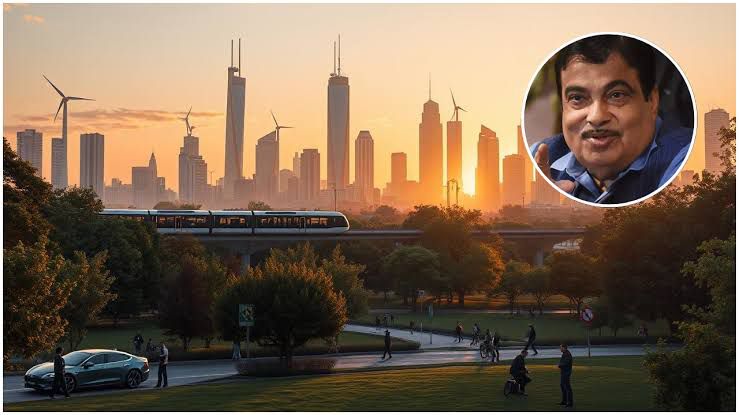Union Minister for Road Transport and Highways, Nitin Gadkari, has introduced an ambitious and futuristic roadmap aimed at revolutionizing India’s public transport system. This “mobility revolution” focuses on integrating green technology, cutting-edge infrastructure, and cost-efficient solutions to improve both urban and rural connectivity. At the heart of this transformation are initiatives like electric mass transit, aerial pods, ropeways, and high-speed highway expansion, all aimed at easing congestion, cutting emissions, and lowering travel costs.
In addition to infrastructure and vehicle innovation, digital integration and data-driven mobility management are becoming core components of the new transport strategy. The government is rolling out intelligent transportation systems (ITS) that use real-time data for traffic prediction, vehicle tracking, toll collection, and emergency response. These systems will be integrated with electric bus fleets and ropeway networks, enabling smoother scheduling, safety monitoring, and energy efficiency. Mobile apps are also in development to provide passengers with live updates, ticketing solutions, and route optimization.
One of the key highlights of the plan is the introduction of flash-charging electric buses. A pilot project is already underway in Nagpur, featuring a 135-seater electric bus with modern amenities such as air-conditioning, high-speed capability (up to 120 km/h), and ultra-fast charging technology that allows for 30–40 minutes of power replenishment during stops. These buses are expected to operate on major intercity routes such as Delhi–Jaipur, Mumbai–Pune, and Bengaluru–Chennai, offering fares that are 30% lower than diesel alternatives.
The roadmap includes the development of aerial pod systems and ropeways, particularly in congested urban areas and difficult-to-access regions. Bengaluru and Delhi are set to pilot pod taxis and pillar-based rapid mass transit systems, while nearly 360 ropeway and cable car projects are being planned or built in hilly and pilgrimage areas like Kedarnath. These systems aim to provide efficient last-mile connectivity and promote tourism while reducing environmental impact.
The government is also pushing forward with extensive road infrastructure development. Plans are in place to upgrade 25,000 kilometers of two-lane highways into four-lane corridors, with a target of constructing 100 kilometers of roads per day. Since 2014, India’s national highway network has expanded from about 91,000 km to over 146,000 km, while high-speed corridors have increased from just 93 km to nearly 2,500 km. Modern construction techniques like precast technology.
To ensure successful implementation, the government is actively working on building strong public-private partnerships and regulatory frameworks to support this mobility overhaul. Skill development programs are also being introduced to train a new generation of transport engineers, technicians, and system operators, ensuring the long-term sustainability and management of these advanced systems. The initiative reflects a shift not just in infrastructure, but in India’s approach to future-ready, eco-conscious governance.
Ultimately, Nitin Gadkari’s roadmap is a bold step toward transforming India’s transport sector into a modern, sustainable, and inclusive system. By blending electric mobility, advanced infrastructure, and environmentally friendly policies and improve the overall travel experience for millions of Indians.










































